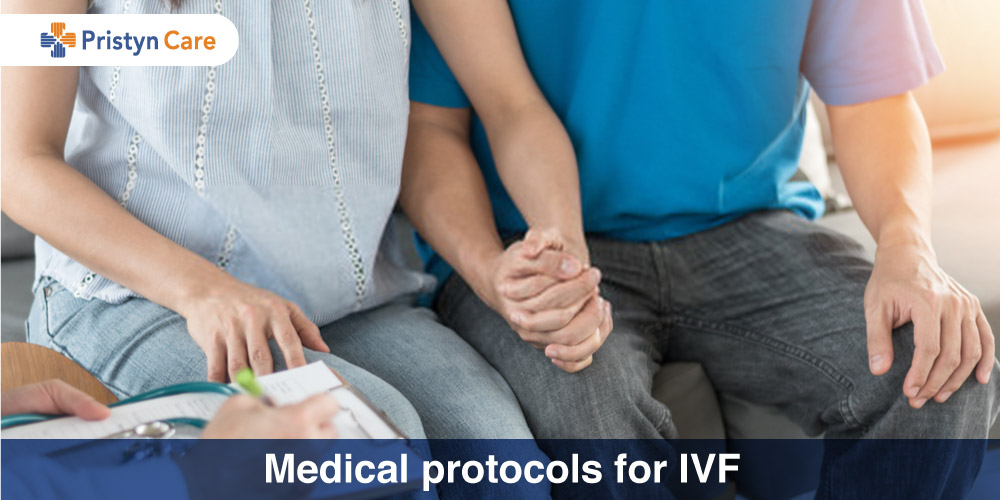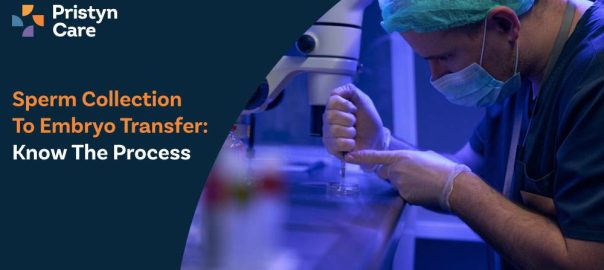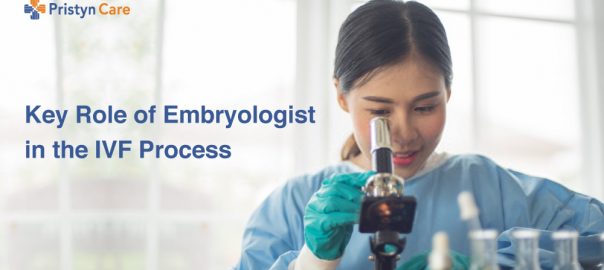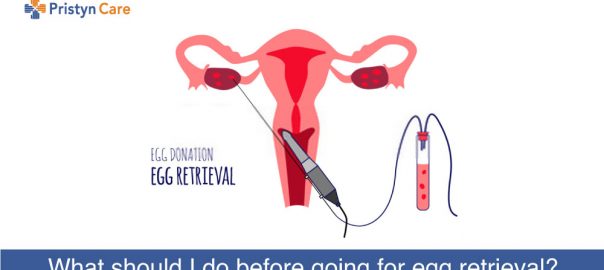![]() Views: 143
Views: 143
Medical Protocols for IVF
We all know that IVF, i.e., In vitro fertilization technique is making many people’s dreams of having a baby of their own come true. The major steps involved in an IVF cycle are as follows:
Dedicated Support at Every Step!
Our Doctors are available 24 hours a day, 7 days a week to help you!
- The first step of the IVF treatment cycle is on the first day of your period.
- Thereafter, the IVF specialist stimulates your ovaries through various medications.
- Step three involves the egg retrieval process which is very important as embryo development depends upon healthy eggs.
- Thereafter comes the process of sperm collection.
- Then the process of fertilization takes place in a lab by the specialist.
- After fertilization, doctors conduct the process of embryo development for embryo transfer.
- Now, the final step of embryo transfer takes place. The embryo is inserted directly in the uterus with a syringe inserted through a vaginal catheter.
- Lastly, the doctor conducts several blood tests to confirm the conception.
IVF protocols include various fertility drugs that can be given in a variety of combinations to stimulate and superovulate the ovaries to produce numerous follicles. These protocols will help a woman in producing healthy eggs before the process of egg retrieval. These steps are done following various IVF protocols depending on what suits you best considering your age, basal follicle count, medical history and family-building goals. Your surgeon will assess all such important factors to determine whether you need mini IVF or micro IVF protocol.
Table of Contents
Which IVF Protocol is Right for you? Various Medical Protocols for IVF:
Short Protocol or Antagonist protocol
- This protocol is effective for the most number of patients and involves very few injections as well.
- Your doctor may ask you to take birth control pills prior to starting IVF procedure and steps.
- For 10 days, you’ll have to take hormones like FSH and LH in the form of injections. These are follicle-stimulating hormones.
- From around the fifth day, an additional antagonist named Gonadotropin-Releasing Hormone is added in the combination. This will prevent premature ovulation.
- To reduce the chances of OHSS, i.e., Ovarian Hyper-stimulation Syndrome, your doctor may use a “Lupron trigger” or “dual-trigger”. These will also enhance the process of final maturation of oocytes before the egg retrieval process.
Down-Regulation, or Long Lupron Protocol
- This protocol is suggested to younger patients or patients who have poor embryo quality from other protocols.
- Your doctor will instruct you to use birth control pills before starting the IVF cycle.
- By the third week, your doctor will administer Lupron. This is an injectable medicine that will suppress two hormones in your pituitary gland. These hormones cause you to develop follicles in your ovaries and release eggs.
- This will allow FSH and LH, injectable hormones to control your cycle and prevent premature ovulation of the follicles.
The Flare Protocol or Microdose Lupron Co-Flare Protocol:
- This protocol works when you have poorly responded to other protocols.
- Your fertility doctor might also suggest this if you are of advanced maternal age.
- This protocol involved a lower dose of Lupron which helps in suppressing the body’s natural production of FSH.
- You’ll take the microdose of Lupron until your hCG injections start.
- This protocol often results in an enhanced responsiveness of ovaries and results in an increased number of oocytes retrieved. This happens because your doctor adds more FSH to your already producing FSH internally.
No Cost EMI, Hassle-free Insurance Approval
Alternative IVF Protocols
Estrogen Priming Protocol:
- This protocol enhances ovarian response in the women who respond poorly to the short protocol or the women who are diagnosed with Diminished Ovarian Reserve (DOR).
- Your fertility doctor can also advise you to administer an estrogen patch in addition to the short protocol. This could be done on even day 1 of a cycle or after a few days of GnRH antagonists.
Mini-IVF or Micro-IVF Protocol:
- This is an alternative to traditional treatment. This is based on the belief that minimal stimulation can be beneficial.
- Your doctor may advise you to consume very low dose medications or fertility pills so that they can retrieve one or two eggs at a time.
- The only problem with this protocol is that it produces very few chromosomally normal eggs. It takes many more egg retrievals to achieve pregnancy.
The type of protocols that your surgeon will choose will be best as it will be optimal depending upon your age and all related factors. Whether the protocol will be aggressive or lenient, short or long will depend upon your physical assessment by your IVF expert. You need to put your complete trust in him/her to await the best result and news. You can ask all sorts of questions related to which protocol you will follow and why so that you get aware of the whole process and types of medications you will follow. In case of any unusual side effects during these cycles, you must immediately contact your doctor as it might deter the success of the process. Rest all will be good if you follow your doctor’s instructions regarding diet and medicines and various do’s and don’ts during IVF treatment and all protocols.










